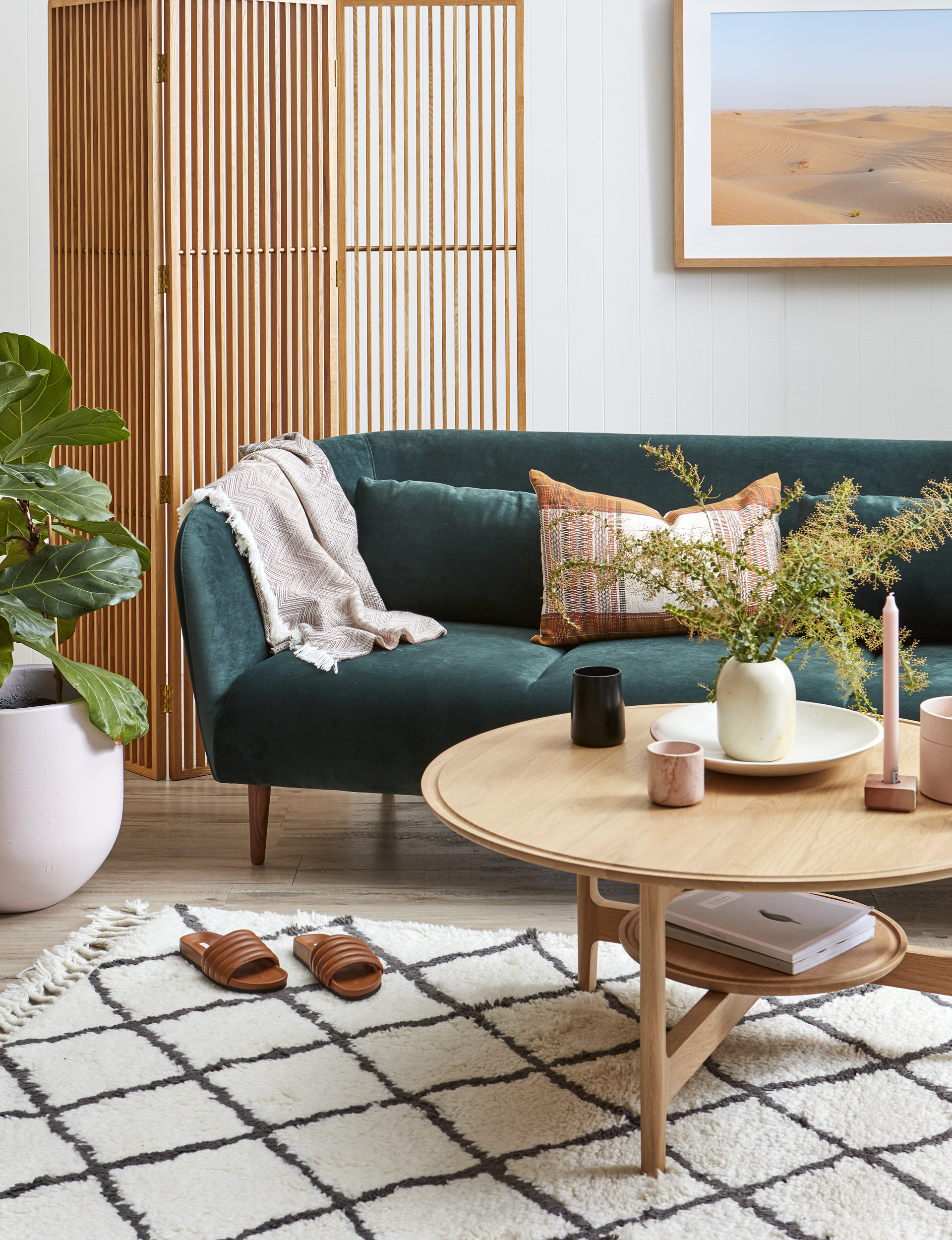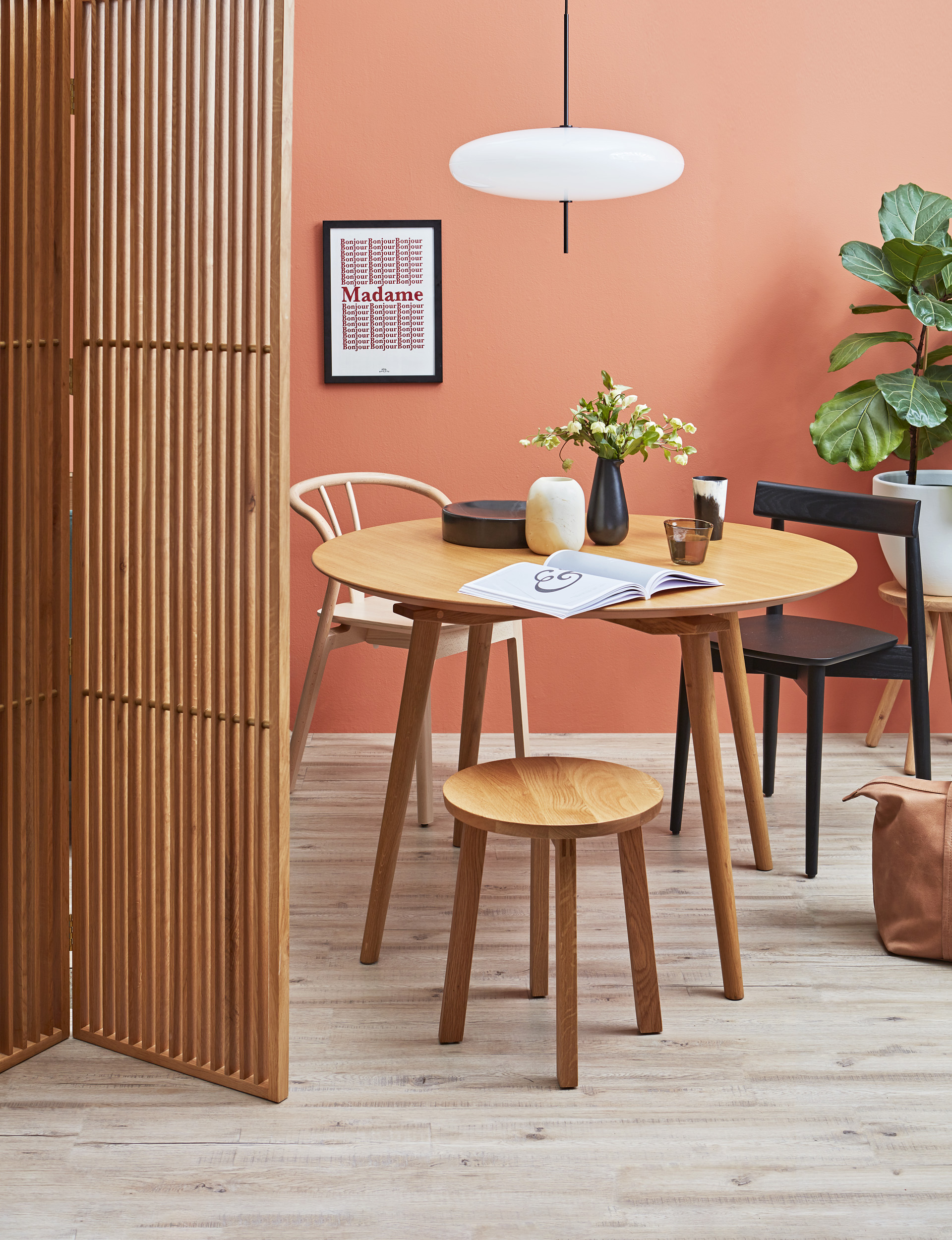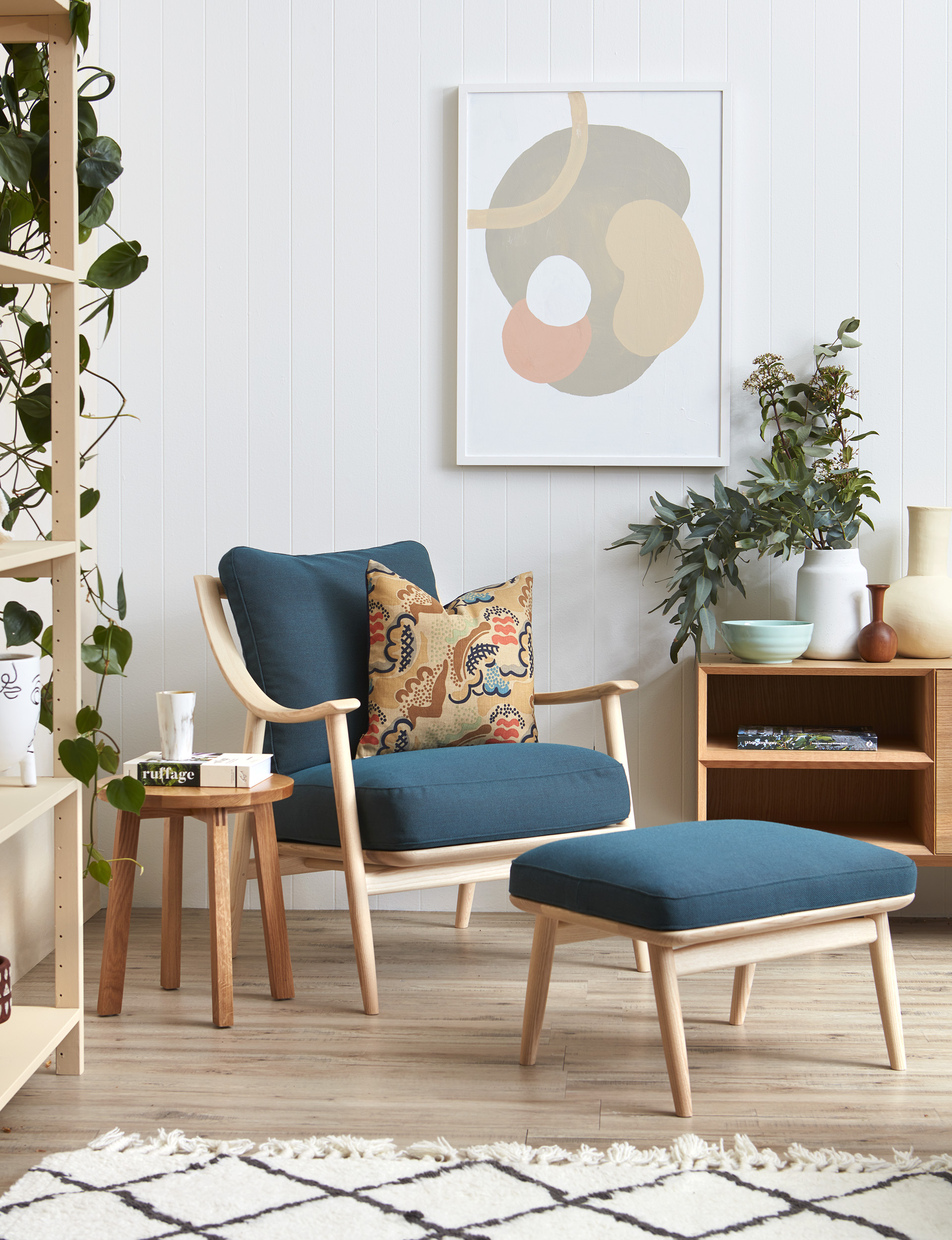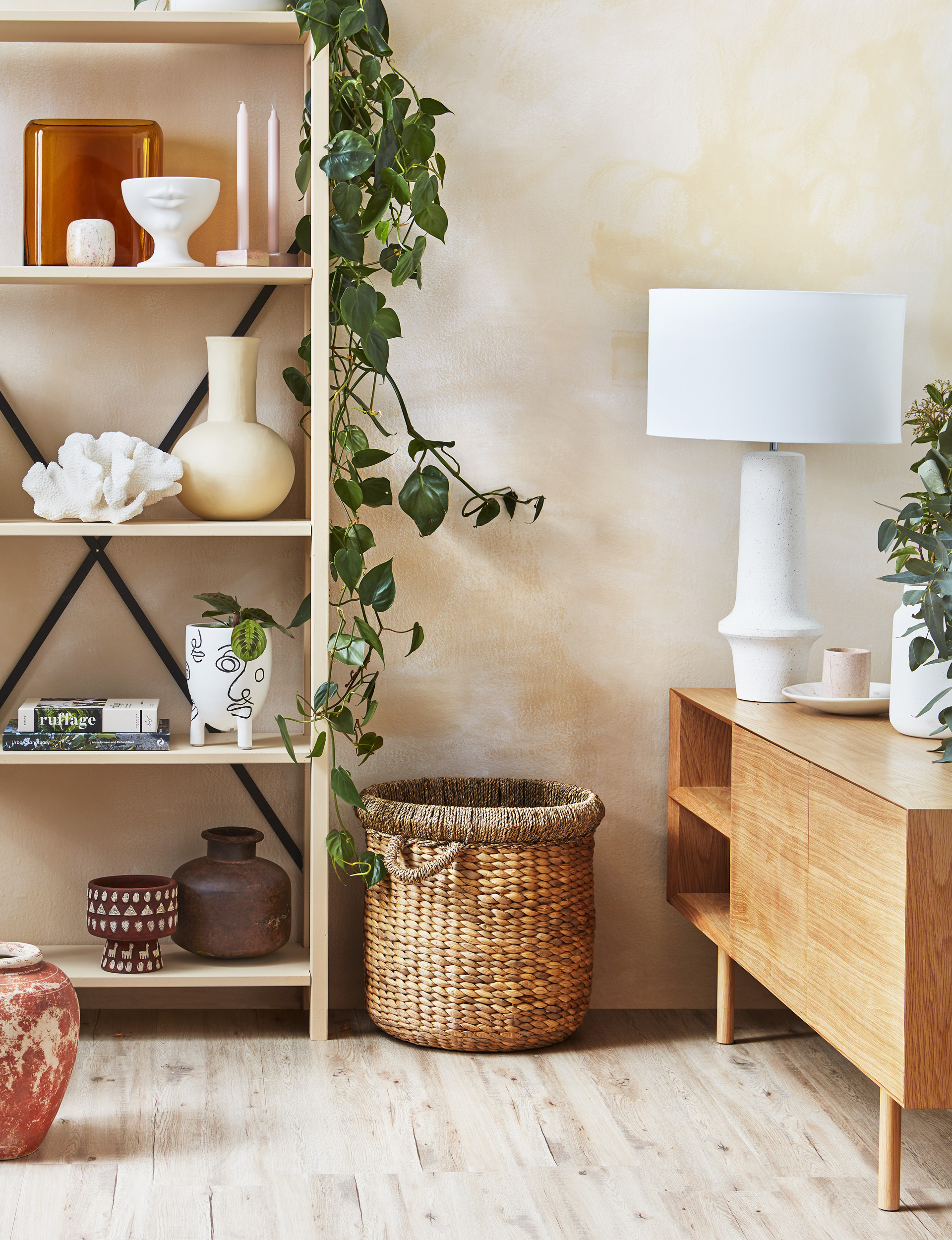Successfully creating separate zones inside an open-plan area is as easy as using paint, colour and some well-chosen furnishings
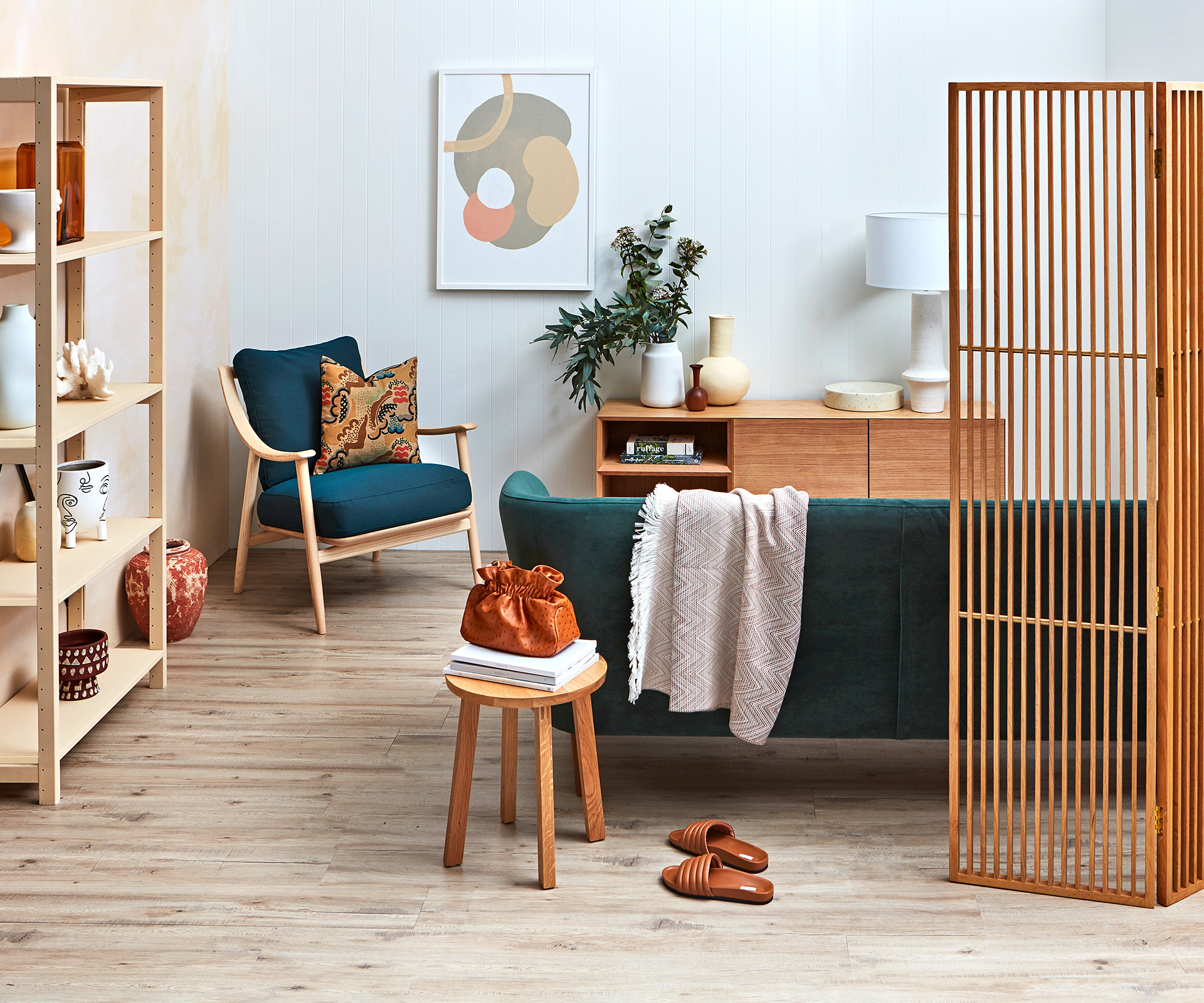
1. Colour
When defining zones, colour is your best friend. Use objects and furniture from the same colour family to create visual separation, and if you’re feeling adventurous, add a feature wall in a statement hue or effect. Here we’ve used sandy shades and teal in the lounge, and a stronger terracotta/black combo in the dining area.
2. Flooring
When zoning a space, it’s best to keep some elements consistent so the various areas still have good overall flow. Wooden flooring is great for creating continuity throughout a large room, and rugs can then be laid on top to delineate smaller zones.
3. Texture
Once you’ve worked out your colour scheme, select materials to help define your spaces further. Velvets, knits and fluffy flokati rugs are ideal for a living space, whereas smooth wood and ceramics are better suited to a dining area. This painted wall was dry-brushed over the top for visual texture and depth.
4. Furniture
Open shelves are a wonderful way to create the effect of a wall without blocking out light or losing functionality. If this isn’t an option, a slatted screen is a versatile way to zone spaces and can easily be stored when not in use.
5. Storage
Use shelving to signal a change in function within a large space. Books and decorative objects work well in a living space, while you may choose to store plates and glassware in a dining space. Plants or greenery will provide another element and act as a linking theme through the entire open-plan space.
Styling by: Amber Armitage. Photography by: Wendy Fenwick.
This article was first published in Your Home and Garden. Follow YHG on Instagram, Facebook and sign up to the fortnightly email for inspiration between the issues.
EXPERT PROJECTS

Create the home of your dreams with Shop Your Home and Garden
SHOP NOW

